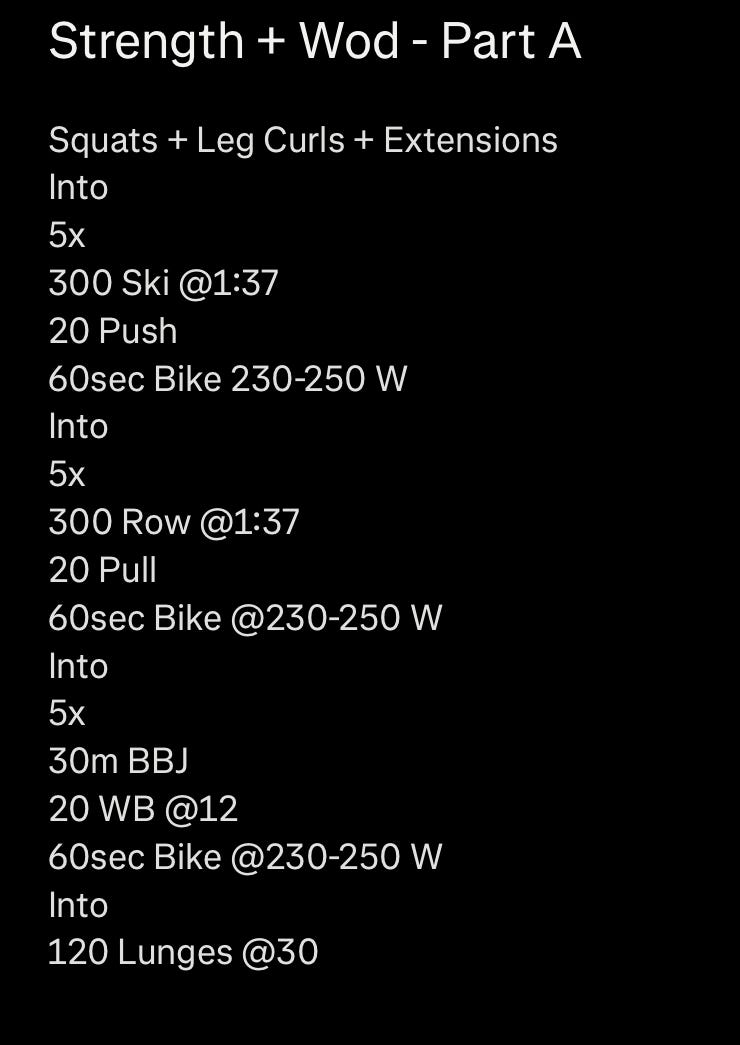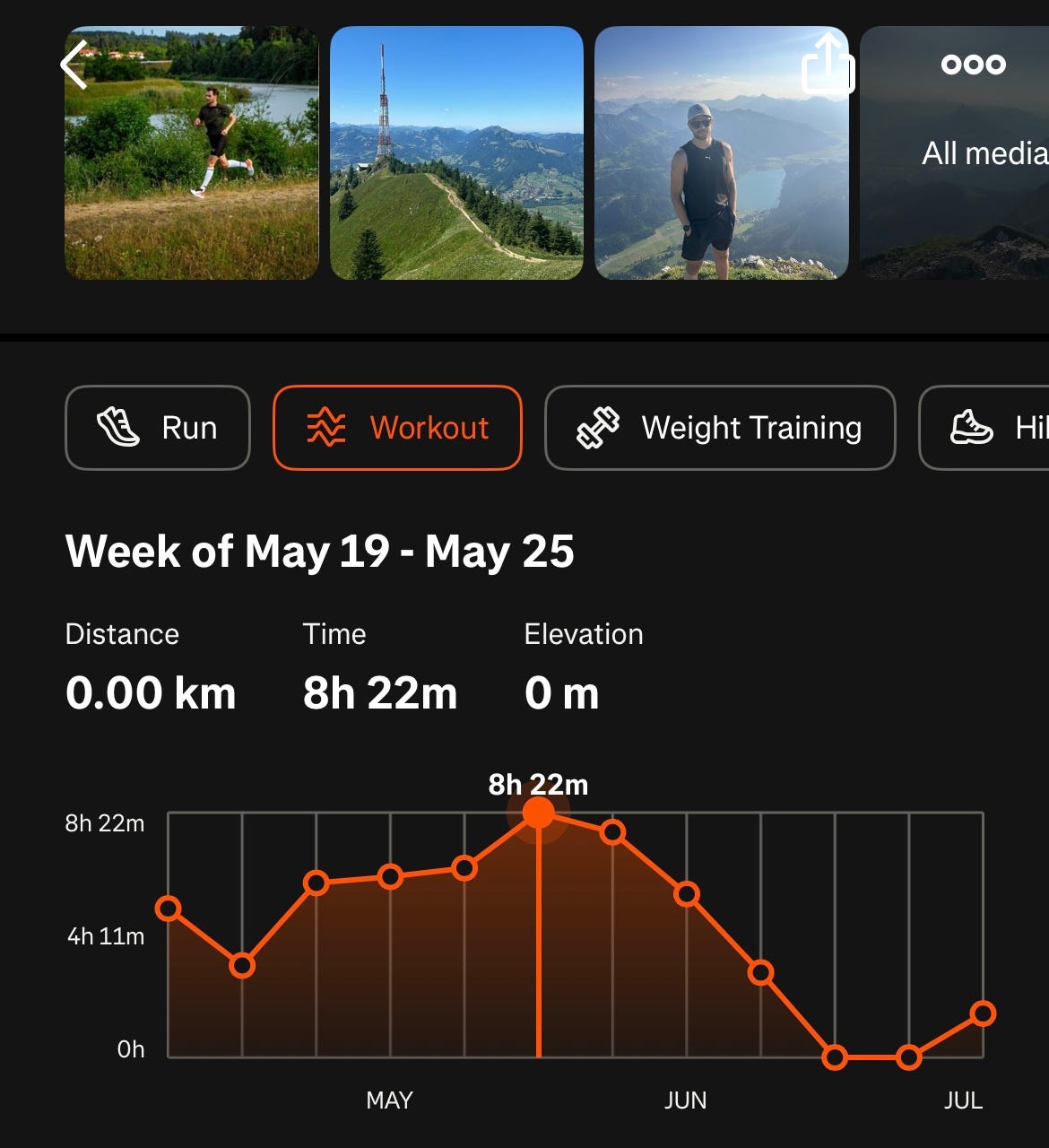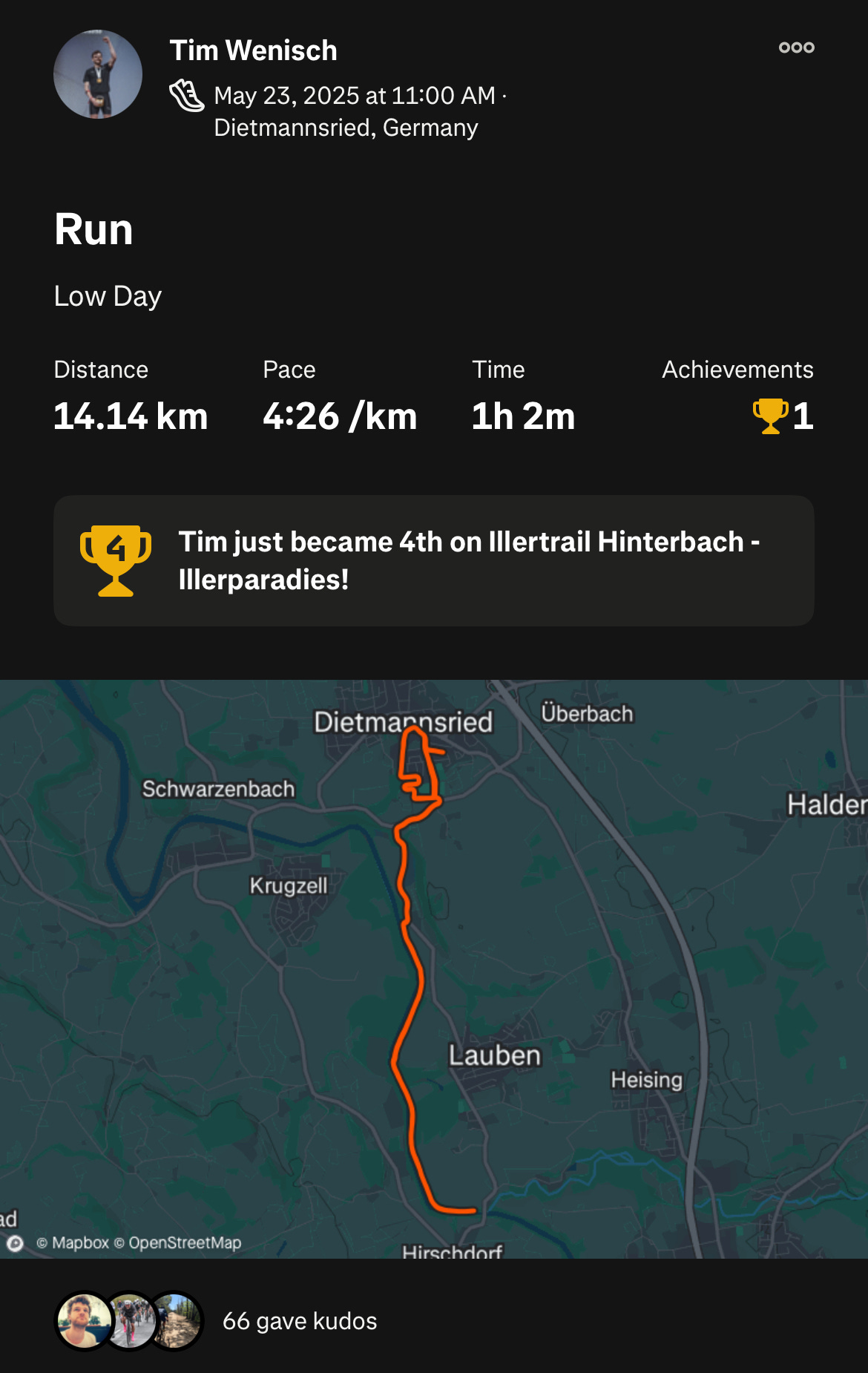How Tim Wenisch Trained to Win the 2025 Hyrox World Championship
Twice-daily sessions, 20-hour weeks, and the strategy behind his dominant win.
Tim Wenisch dominated the 2025 Hyrox World Championship. His running split was a staggering 50 seconds faster than anyone else, and he clocked the fastest times on both the row and lunges. Here’s an inside look at how he prepared for this year’s world championships.
The Basic Training Week
Tim trained twice a day from Monday to Saturday, with Sundays reserved for “rest”—though these often included a long run, bike ride, or some easy work on the ergs.
His weekly structure alternated between high and low days, ensuring each hard session was followed by a lower-intensity one. This approach allowed him to sustain consistency and motivation across months of preparation.
Each training day included:
One outdoor run
One gym session
Total weekly volume: 18–20 hours
Hard Days
On harder days, Tim combined strength, conditioning, and threshold running.
Gym: 45–60 minutes of strength work, followed by a 25–30-minute conditioning circuit.
Run: Usually a longer threshold workout, such as 10 x 1km intervals.
Example Strength Session
5×5 back squats, supersetted with countermovement jumps
Unilateral leg exercise (e.g., split squats or Bulgarian split squats) paired with an explosive movement
Calf raises with an isometric hold + pogo jumps (Tim prefers supersets to keep things engaging.)
Leg extensions
Conditioning Circuit
Hyrox-specific movements like wall balls, lunges, and sled pushes, performed at or slightly above race pace.

Easy Days
On easier days, the focus shifted to recovery and aerobic conditioning:
Morning: Zone 2 run (for Tim, ~4:20–4:30 min/km pace)
Evening: Light session on the ergs
This structure allowed him to build volume without accumulating fatigue.
Running & Erg Volume
Running: Tim capped his mileage at ~90km per week (previously he’d gone over 100km). Most weeks were closer to 65–80km.
Ergs: Up to 40km per week, helping him place 1st on the row and 2nd on the ski-erg. Many sessions ended with short bursts at high intensity to reinforce race pace.


Daily Routine
Tim’s days were highly structured and consistent:
Morning: Relaxed breakfast, first session around 9–10am
Afternoon: Lunch, second session at 4pm
Evening: Dinner and 7–8 hours of sleep
The Takeaway
Tim’s training wasn’t built on crazy mileage or exotic methods—it was built on consistency, structure, and focus. By balancing intensity with recovery, keeping his volume sustainable, and sticking to a rock-solid daily routine, he set himself up for a peak performance when it mattered most.
His approach is a reminder that elite results come from mastering the basics and doing them relentlessly well.
Learn More
🎙️ Podcast: Tim dives deeper into his training in the podcast we recorded together.
📈 Strava: Follow Tim’s training logs and insights on Strava





